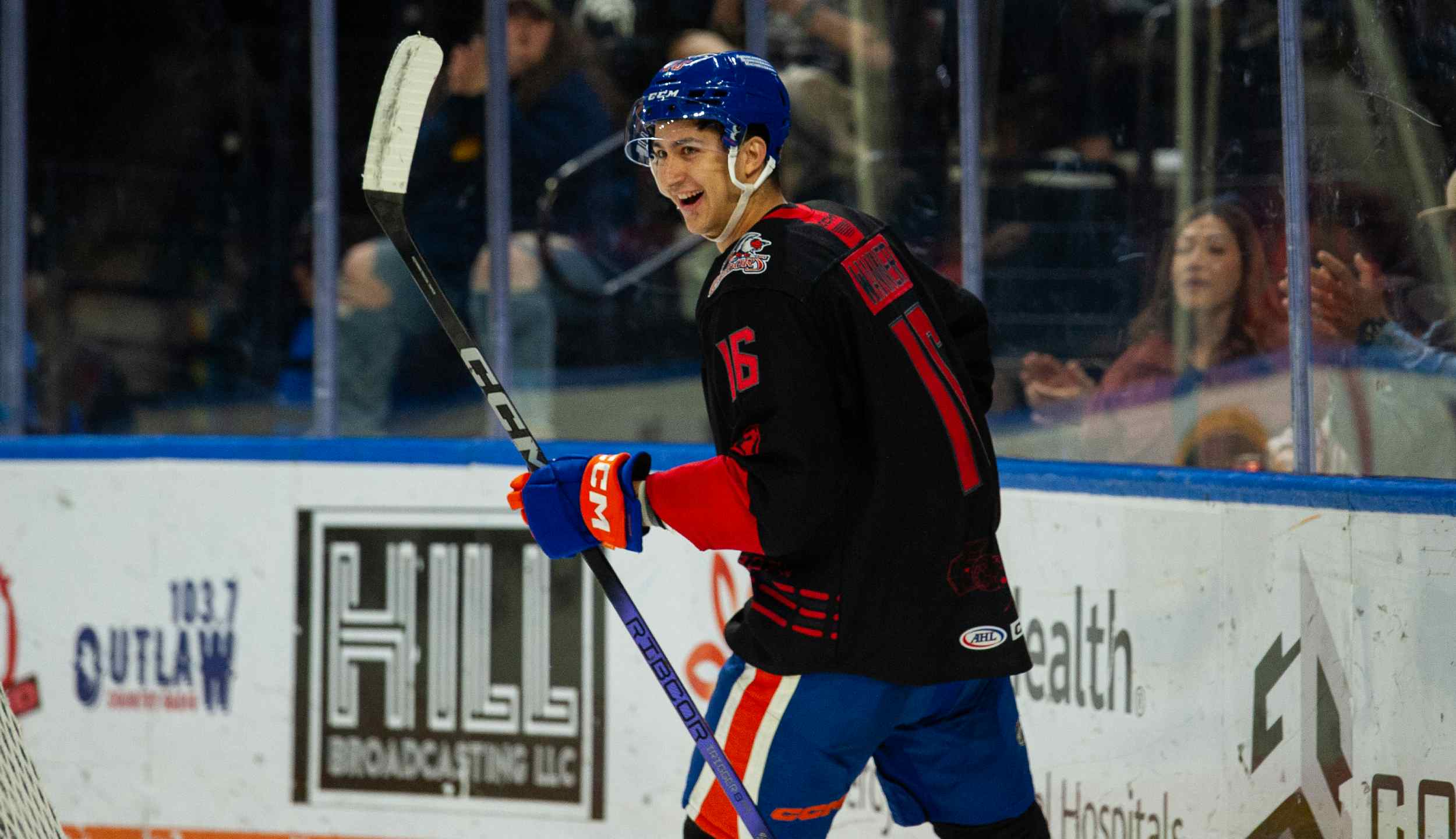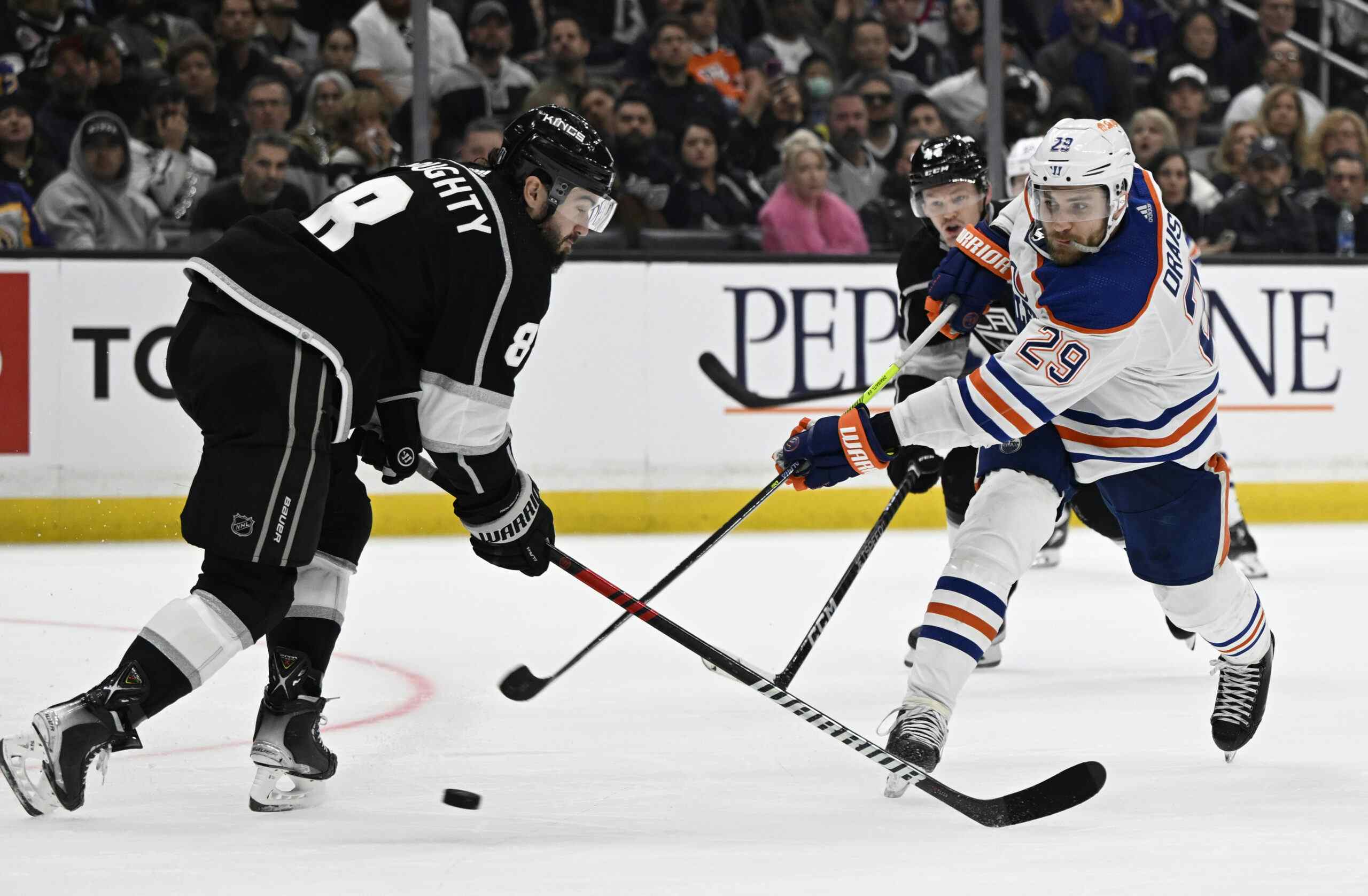Dallas Eakins and Priorities

Dallas Eakins, like the men who have preceded him as head coach of the Oilers the last few years, proved that at the least he was very capable of saying interesting things at his debut Edmonton press conference. What do his words tell us about how he’s going to run the team?
The Commitment
What we’re going to do here with this team is we’re going to be committed to character. We are going to be committed to a high fitness level. We are going to be committed to the details of tactical hockey. Foremost, the number one thing we are going to be committed to is competition. This team is going to compete. If you’re going to play for the Edmonton Oilers you are going to compete no matter if you’re a first-line guy, the sixth defenceman, the 23rd man on the roster, a player playing in the minors you are going to compete to play on this hockey team. That’s how you win hockey games in the NHL right now. It’s how you get your organization better. That is my commitment to this organization: to make that happen.
That one prepared paragraph from Eakins has a lot in it.
Watching the reaction on Twitter, both to this statement and throughout the presser, I noticed Eakins’ comments on competition got a lot of play. Phrases like “country club atmosphere” and “lazy” and “lack of accountability” and “losing mentality” got used a lot, with the idea that the coach was going to come in and change those things. It struck me as interesting because character and competitiveness (well, “compete level”) were watchwords of the Tambellini administration; nothing that Eakins said was noticeably different in that regard than what previous coaches had said. Much of the stated rationale for bringing Pat Quinn in was his ability to push players. None of this is to say that Eakins is going to do things the same way Quinn did; rather that an emphasis on character and competitiveness has not been particularly helpful for the Oilers the last few years.
Far more interesting to me were the comments on player fitness and especially on tactics.
Fitness
There may be some big adjustments for the players with me coming in here. I am someone who firmly believes that if you’re talented just being talented is not enough. I want our players to be so fit that a forward, if I ask him to play 26 minutes that night, he’s going to play 26 minutes at a high level. If we’re in a Stanley Cup playoff game and we go to quadruple overtime he will still be firing on all cylinders. That is something I am passionate about. That will be probably a bit of a challenge on the buy-in, but it’s non-negotiable and they will eventually buy in.
Eakins is known as a fitness zealot. It would have been impossible to throw a rock on Twitter Monday without hitting a Toronto reporter cracking a joke about how Eakins could be in better shape than some of his new players and how embarrassing that would be for them. He emphasized this to an extreme degree, and there’s every reason to believe he means it – this is far from a new thing.
I would guess that with some individual exceptions this isn’t going to be a huge driver of results for the team as a whole – I’m basing that on the basic idea that the Oilers, as a professional hockey team, probably aren’t way out of shape (also because with one or two exceptions, there has been nothing to indicate that they are). Getting that little bit extra matters, but it’s not likely to be the difference between lottery team and Cup contender.
The other reason I’m a little muted on this point is that it doesn’t take much looking to find examples of players who weren’t able to excel despite excellent fitness. Robert Nilsson hit the gym really hard in the summer of 2009 and came into camp having put on 15 pounds of muscle; he got bought out in the summer of 2010. Ryan Martindale’s fitness level was something Oklahoma coach Todd Nelson took pains to point out this fall, during an excellent training camp; here’s how Nelson described him at the end of the season:
He’s gotten a lot better, and it’s going to take a bit of time. He suffered an injury that really set him back because I thought he had an excellent training camp and he was definitely quick enough at the time and then he hurt his knee and after that he lost all that hard work he put in.
A commitment to a standard of fitness can’t hurt, and it may help – particularly in individual cases – a great deal, but expectations need to be kept modest.
Tactics

The following is from Eakins’ follow-up interview on Oilers Now, and it struck me as very interesting:
I believe in playing multiple systems. I don’t follow the NFL, but I do know – I’ve read up on the NFL – where these football players get these huge stacks of playbooks and they have to know all these plays. And you have hockey teams that run one forecheck, one neutral zone forecheck, and they defend one way. That’s crazy to me. The one thing that we’ve been working on, the teams I’ve been coaching, is we have multiple systems, and we’ll switch in and out of them out of games, from game to game, and it’s important now. I tell you, you’re so heavily scouted and the pre-scouting that goes on against your team all the time, it’s tough to get around. If you can get your players prepared with multiple ways to play, and they’re comfortable with it, you can catch teams off-guard.
There were, without question, times the Oilers struggled tactically last season. Game nine against Vancouver comes to mind – the Oilers ended up losing a close game in overtime, but what was really galling was the team’s inability on the powerplay to gain the opposition zone. They would fail to gain the zone, regroup, and fail. Regroup and fail. At least one whole power play was lost without gaining significant neutral zone time. The March 23rd game against St. Louis was another frustrating example – the Oilers generated one lousy shot on 43 tip-ins and dump-ins 5-on-5, couldn’t gain the opposition zone with possession and once there couldn’t generate shots off the entries. On the whole, the team seemed to regress under Ralph Krueger, and watching the team it felt like a lot of that had to do with the Oilers inability to find a functional game plan.
Because of the drop-off from Renney to Krueger, this feels like an area where a coaching change could make a real difference – and Eakins comes across as a man brimming with plans.
Recently around the Nation Network
At Flames Nation, Kent Wilson makes an interesting point about former Flames captain Jarome Iginla:
[I]f Iginla had gone to Pittsburgh and suddenly started to drive possession again, then we’d know something had gone very wrong in Calgary – be it in terms of strategy, coaching or quality of linemates. Instead, the opposite was true – the erstwhile captain’s struggles continued in Pittsburgh, despite a vastly superior team. Iginla finished the playoffs with a -7.2/60 relative corsi, despite a very favorable 58.3% zone start. He also spent a lot of time with Malkin and Crosby through the first two series before Dan Bylsma eventually gave up and dropped him down the rotation.
Click the link above to read the whole piece, or feel free check out some of my other pieces here:
- Report: Teemu Hartikainen signs in the KHL
- What kind of game have Dallas Eakins’ Marlies played in the AHL?
- Report: Horcoff to a contender, Bowness turned down Edmonton
- Oilers expected to fire Ralph Krueger, hire Dallas Eakins
- Anton Lander should start 2013-14 in the minors
- Follow Jonathan Willis on Twitter!
Recent articles from Jonathan Willis





